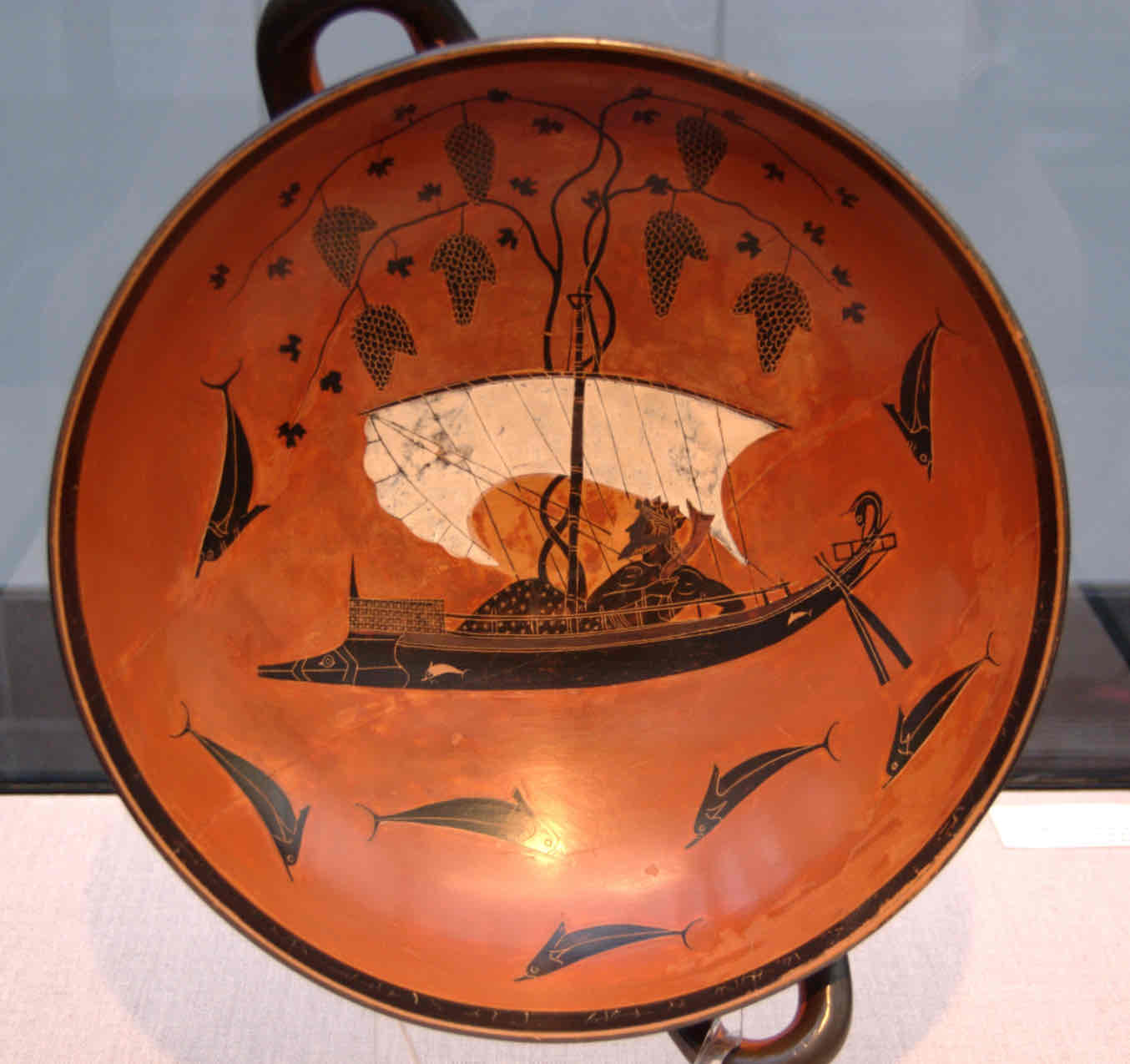Dionysus sailing on the Ocean
1/10
Earn XP
Description and Tags
Name | Mastery | Learn | Test | Matching | Spaced |
|---|
No study sessions yet.
11 Terms

What shape pot is this?
Kylix
Who made this pot?
Exekias
When was this pot made?
540-530 BC, Mid 6th century
What does the word tondo mean?
A Renaissance term for a circular work of art.
What is the context behind the pot’s narrative?
Pirates took Dionysus hostage on their boat so Dionysus turned them into dolphins and made a grape vine to climb up the mast of the ship and overtake it.
Composition
Is there compositional symmetry? What is the central focus?
The central focus of the pot is the boat in the centre. Both the boat and the sail are asymmetric but there is some compositional symmetry with dolphins reflected on either side of the boat.
What happens when you drink from the bowl?
It looks as though Dionysus boat is sailing into the mouth of the drinker.
Also the use of the ‘eye cup’ motif on the side of the pot gives the allusion that the face on the side of the bowl is the face of the drinker. This adds a humorous and interactive nature to the pot.
How has Exekias created detail? (Limitations as well)
Incisions have been used to create individual grapes in the bunches. However their is a lack of variety in the grape shapes and they appear slightly unrealistic
The white sail stands out against the red hued background adding a pleasing contrast and variety
The incised lines on the sail and the way the sail curves gives the impression of billowing and movement
The organic curve VS the straight line of the mast creates a nice contrast
What detail has been used on the figure of Dionysus?
Incision used to create vine crown, volute ear and beard → variety, characterisation
Minute detail of broken chains
Polka dot patterned garment
Sense of leisure and smugness in his relaxed posture
Limitation of 2D BF seen in his unclear shoulder musculature
Scholarly Quotes
What does Woodford say about this pot?
‘One of the most imaginative and haunting…’
Scholarly Quotes
What does Boardman say about this pot?
‘His originality appears in many forms. He breaks Athenian conventionality to let Dionysus sail across the whole empty interior of a cup…’